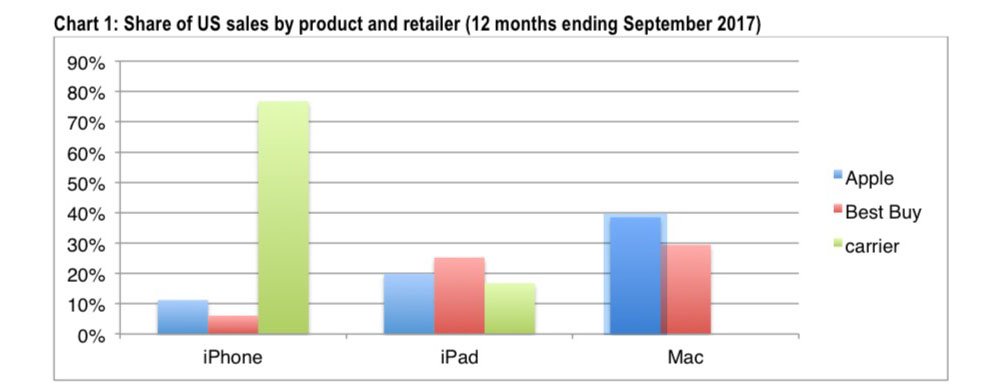Much is made of Apple’s retail arm. The company described it as its “biggest product” during the recent iPhone X launch, and it’s initiated a revamp of its stores to turn them into cult-like “plazas” where fans gather to worship the latest technology.
But according to a new survey of US consumers, the vast majority of iPhones and iPads are purchased somewhere other than Apple’s hallowed halls of retail.
A CIRP survey asked 2,000 US consumers who had recently bought Apple products about their purchasing decisions. They found that just over 10% of iPhones were bought at the Apple store, with the bulk of sales going directly to carriers. Best Buy raked in about 5%, with the majority of those sales likely being of phone/plan combos sold on behalf of carriers.
Looking at those numbers actually goes some way towards explaining Apple’s recent pricing strategy with the iPhone, namely its introduction of the iPhone Upgrade Program, which lets customers lease a phone, or buy it in installments. Data from carrier earnings tells us that the majority of phones are bought on a two-year equipment installment plan, as it’s the most attractive way of spreading out the cost of a new device over 24 months.
Carriers have traditionally been the number-one place to get EIPs, and their popularity explains the high percentage of iPhone sales through carriers. While Apple is happy that carriers are selling so many iPhones, it makes less profit on each device sold through a carrier, as the carriers receive a wholesale discount. If Apple can tempt some of those customers off carriers and onto a direct purchase, using its iPhone Upgrade Program, it’s an easy way to pad the bottom line without actually selling any more phones.










